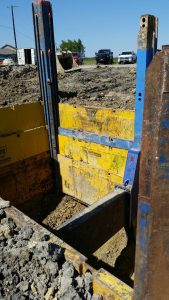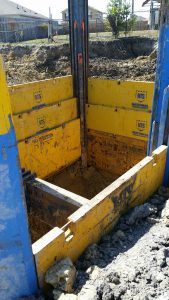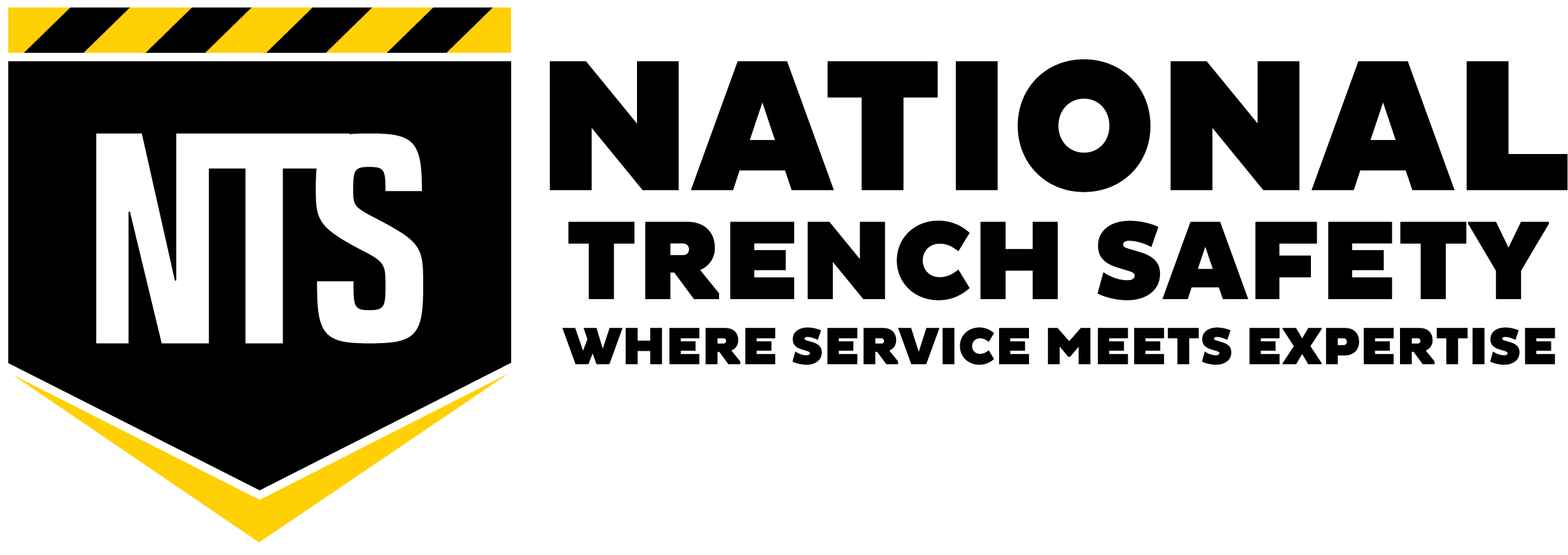Slide Rail System Utilized For Wet Well Installation
A South Texas contractor was performing part of a residential upgrade project, which included the construction of a new wet well. The contractor would be framing and pouring a concrete pad for the three section wet well, with the wet well then connecting to an existing lift station. Local population growth and anticipated future growth had made the project a necessity for the municipality.
The contractor’s Competent Person had classified the soil as a mixture between Type B and C soil. The first 10-ft of soil from the top of the ground was a farm land soil that transitioned to a clay and soft caliche mixture past the 10-ft depth. As that clay and soft caliche progressed to the bottom of the excavation it transitioned into a harder, dryer material with a limestone mixture. The size of the wet well and scope of the project would require the contractor to excavate this soil combination to a depth of 30-ft.
The contractor reviewed several shoring options and elected to use a slide rail system along with a site specific engineered plan. The Occupational Safety and Health  Administration (OSHA) typically requires an engineered plan at any depth greater than 20-ft when a manufacturer’s tabulated data does not specifically provide for the equipment’s use or when the employer’s Competent Person deems it necessary. This project was one of those the OSHA standard is geared toward due to the depth of the excavation and complexity of the soil type. In addition to ensuring standard compliance, the engineered trench safety plan would also help to maximize the effectiveness of the system. NTS’ engineering team was able to tailor the slide rail system to the unique site conditions which allowed the contractor to achieve optimal clear span lengths by using the longest length panels that could withstand the force exerted at the bottom of the 30-ft excavation depth.
Administration (OSHA) typically requires an engineered plan at any depth greater than 20-ft when a manufacturer’s tabulated data does not specifically provide for the equipment’s use or when the employer’s Competent Person deems it necessary. This project was one of those the OSHA standard is geared toward due to the depth of the excavation and complexity of the soil type. In addition to ensuring standard compliance, the engineered trench safety plan would also help to maximize the effectiveness of the system. NTS’ engineering team was able to tailor the slide rail system to the unique site conditions which allowed the contractor to achieve optimal clear span lengths by using the longest length panels that could withstand the force exerted at the bottom of the 30-ft excavation depth.
 The slide rail system worked very well for the contractor on the project. The system’s progressive installation process ensured that the system was installed quickly and safely. Once installed, the system’s rolling struts could be moved upward along the system’s rails according to the engineered trench safety plan to provide increased vertical clearance to ensure the crew had the necessary room to complete the project.The contractor was very satisfied with the slide rail system as well as the engineered plan. By combining the engineered plan with the slide rail system, allowed the contractor to effectively manage cost and production benefits to maximize profitability with respect so shoring system design and selection.
The slide rail system worked very well for the contractor on the project. The system’s progressive installation process ensured that the system was installed quickly and safely. Once installed, the system’s rolling struts could be moved upward along the system’s rails according to the engineered trench safety plan to provide increased vertical clearance to ensure the crew had the necessary room to complete the project.The contractor was very satisfied with the slide rail system as well as the engineered plan. By combining the engineered plan with the slide rail system, allowed the contractor to effectively manage cost and production benefits to maximize profitability with respect so shoring system design and selection.





